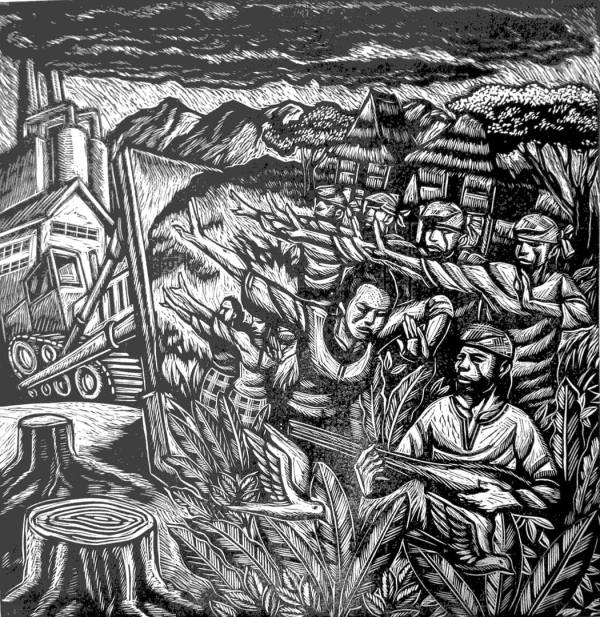Poll officials, and ironically to some extent some lawmakers, are peddling a bad joke. They are currently in chorus in rejecting the hybrid system as proposed by independent groups to push for “full poll automation” in 2016, which is in their universe the use of old precint count optical scan (PCOS) machines from foreign supplier Smartmatic.
One wonders if their memory is too short to remember that the 2010 and 2013 eections were not actually fully automated with the use of PCOS machines. Or maybe, they are dangerously sticking to a wrong idea of “full automation.”
Last week, the Commission on Elections (Comelec) announced that they are rejecting the hybrid system of manual balloting and partial automation in favor of full automation. The proposal for hybrid system, which was pitched by independent IT professionals, was described by the new Comelec chair Andres Bautista as costly and slow, adding that the poll body will now just have two options: either to refurbish the old 80,000 counting machines and lease additional 23,000 units, or lease all voting machines.
PCOS isn’t full automation
Before I explain how ridiculously costly Comelec’s two options are, it should be clarified first that Smartmatic’s voting system is not full automation but partial automation being an example of optical mark reader (OMR) technology. If it really was full automation, then voters would not have to manually shade the ballots to indicate their electoral preference. Full automation, in the real and exact sense, is a system wherein voters directly input their votes to the machines, such as a direct-recording electronic (DRE) voting machine which uses touch screen. Comelec chair Bautista should review this distinction before making a misguided prescription for the upcoming elections.
In rooting for PCOS “full automation” and rejecting the hybrid system, Bautista even claimed that opting for a hybrid electoral system would be against the law. Yet Republic Act 9369 or the poll automation law does not actually specify the use of full automation. What RA 9369 prescribes is the use of the “most suitable technology of demonstrated capability taking into account the situation prevailing in the area and the funds available for the purpose,” as it distinguishes paper-based technology from DRE voting technology.
As I have emphasized in my past articles, it was Smartmatic’s technology that violated the minimum system capabilities specified in the law (by the way, RA 9369 still has no implementing rules and regulations up to now). Let me again point out some of the minimum technical requirements set in the law (Section 7) which Smartmatic failed to comply with:
- Provide the voter a system of verification to find out whether or not the machine has registered his choice – the PCOS machine simply greets voters with a silly “congratulations” message after the ballot was fed to the machine without offering any option for voter verification
- System integrity which ensures physical stability – In the 2010 and 2013 elections, several PCOS machines conked out and broke down even under stable non-catastrophic environment
- Accurate ballot counters – a technical team of experts from the Department of Science and Technology (DOST) discovered the presence of vertical lines in the scanned images of ballots, potentially affecting the accuracy of the votes counted.
Poll watchdogs including the Automated Election System (AES) Watch have repeatedly rejected the PCOS technology given such errors, yet poll officials seem to be stuck with their penchant for Smartmatic’s voting machines.
Lease, sell, repair, repeat
That unwavering penchant for PCOS machines by Comelec came at a very steep price that was shouldered, and will be shouldered again, by Filipinos via taxes.
Let it be not forgotten that for the 2010 national elections, the government paid Smartmatic-Total Information Management (TIM) consortium P7.19 billion for the lease and delivery of PCOS machines (P3 billion for the delivery alone of the counting machines nationwide), and the canvassing system as well. In 2012, the Comelec signed a P1.8 billion contract with Smartmatic to purchase and reuse the PCOS machines for the 2013 midterm elections despite the machines’ glitches.
In December 2014, Smartmatic bagged the P268-million contract to refurbish and repair the old erroneous 80,000 PCOS machines which were cramped in a shady warehouse in Laguna. Thankfully, the Supreme Court voided the contract and ordered the return of the taxpayers’ money. Yet more recently, the Comelec awarded the P1.72 billion contract to Smartmatic for the lease of additional 23,000 PCOS machines to be used for next year’s elections.
All in all, the Comelec-Smartmatic partnership has cost us Filipinos a whopping P10.71 billion (excluding the voided repair contract) since 2009 through the lease, sale and lease again of PCOS machines that have been demonstrated technical glitches over and over again. Such huge amount could have been used for the development of a Filipino and publicly owned voting system that is compliant with the requirements set forth in the law. That way, the government would not need to rely on suppliers third party providers
Hasn’t the Comelec gotten Smartmatic’s lease-sell-repair ploy even up to now? Or is it deliberately playing hostage to a foreign supplier’s corporate interest at the expense of ordinary people and at the cost of free and fair electoral exercise? Come 2016, Smartmatic executives will emerge yet again as the true victors of an election that has become ridiculously lucrative under the control of the foreign private entity.


